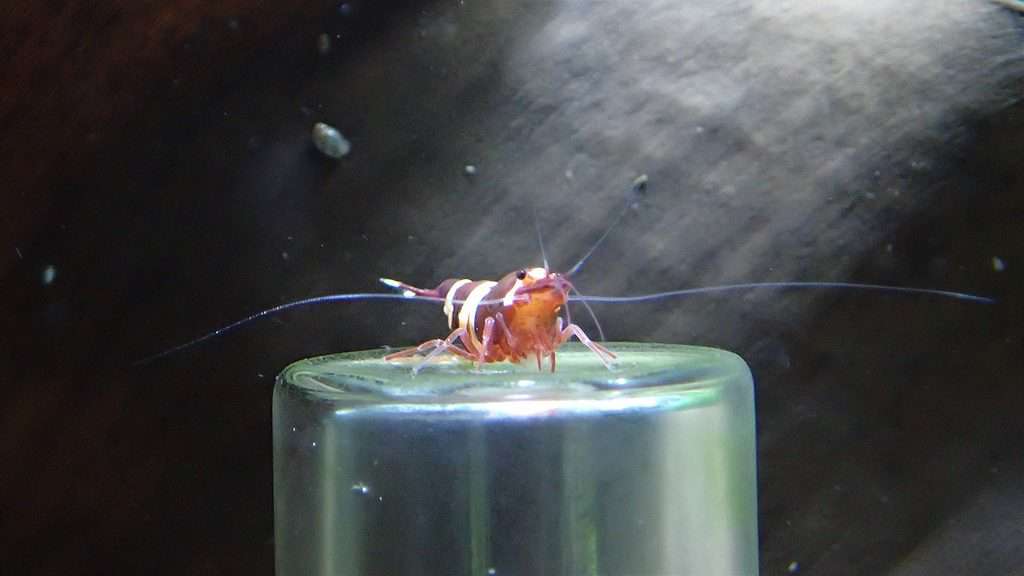What is H202? Hydrogen peroxide (H202) is a chemical that can be added to water in an aquarium.
When added, it breaks down into oxygen and water, releasing extra oxygen into the water and generating free radicals.
Why use H2O2? The extra oxygen from the breakdown of H2O2 helps create a healthier environment for aquatic life. The free radicals generated from the breakdown also help kill harmful bacteria, parasites, and other pathogens that may be present in the water.
How to use H2O2:
- Make sure to use food-grade H2O2 with no additives.
- Monitor and control the concentration of H2O2 used in the aquarium.
- Calculate the dose by dividing the percentage of H2O2 by the tank water volume in liters.
- Turn off filtration for one hour to allow the chemical to exhaust itself.
- Be cautious and follow recommended dosages to avoid overdosing, which can be harmful to the shrimp.
- It is normal to see bubbles when using H2O2, but make sure to double-check your dosing.
- Regular use of H2O2 is not necessary, but it can be a valuable tool in maintaining a healthy shrimp tank, especially in case of unexpected problems.
- In case of frequent shrimp deaths, it may be helpful to stop feeding for a week and start H2O2 dosing as described above.
Read the entire article before dosing!
FAQ
Q: What is H2O2 dosing in an aquarium?
A: H2O2 dosing is the process of adding hydrogen peroxide (H2O2) to an aquarium in controlled amounts. It’s used to treat various issues such as algae, bacteria, and oxygen depletion.
Q: How does H2O2 dosing work?
A: H2O2 is a powerful oxidizer that breaks down organic matter, including algae and bacteria. When added to an aquarium, it reacts with the organic material, which is then converted into oxygen and water. This process can also help increase the dissolved oxygen levels in the aquarium water.
Q: What are the benefits of H2O2 dosing?
A: H2O2 dosing can be an effective method for controlling algae, bacteria, and improving water quality in the aquarium. It can also increase the dissolved oxygen levels, which can be beneficial for fish and other aquatic life.
Q: What are the risks of H2O2 dosing?
A: H2O2 can be harmful to aquatic life, including fish and invertebrates, in high concentrations. Overdosing or incorrect dosing can lead to oxygen depletion, which can be fatal for fish and other aquatic life.
Q: How do I dose H2O2 in my aquarium?
A: H2O2 should be dosed carefully and in small amounts. The recommended dosage is 1 mL of 3% H2O2 per 10 gallons of water. It’s important to turn off all filters and aeration devices before dosing and to observe the aquarium for any adverse effects.
Q: How often should I dose H2O2 in my aquarium?
A: H2O2 dosing should be done as needed and not on a regular basis. It’s important to monitor the aquarium and only dose when necessary. Overdosing can harm the aquarium inhabitants, so it’s important to be cautious and careful.
Q: Can H2O2 be used to treat specific aquarium problems?
A: Yes, H2O2 can be used to treat specific problems in the aquarium, such as algae or bacterial blooms. It’s important to research the specific problem and recommended dosage before dosing H2O2.
Q: Are there any alternatives to H2O2 dosing?
A: Yes, there are alternative methods to H2O2 dosing, such as improving water quality through regular water changes, reducing feeding amounts, and using natural methods like adding live plants or snails to the aquarium.
.

